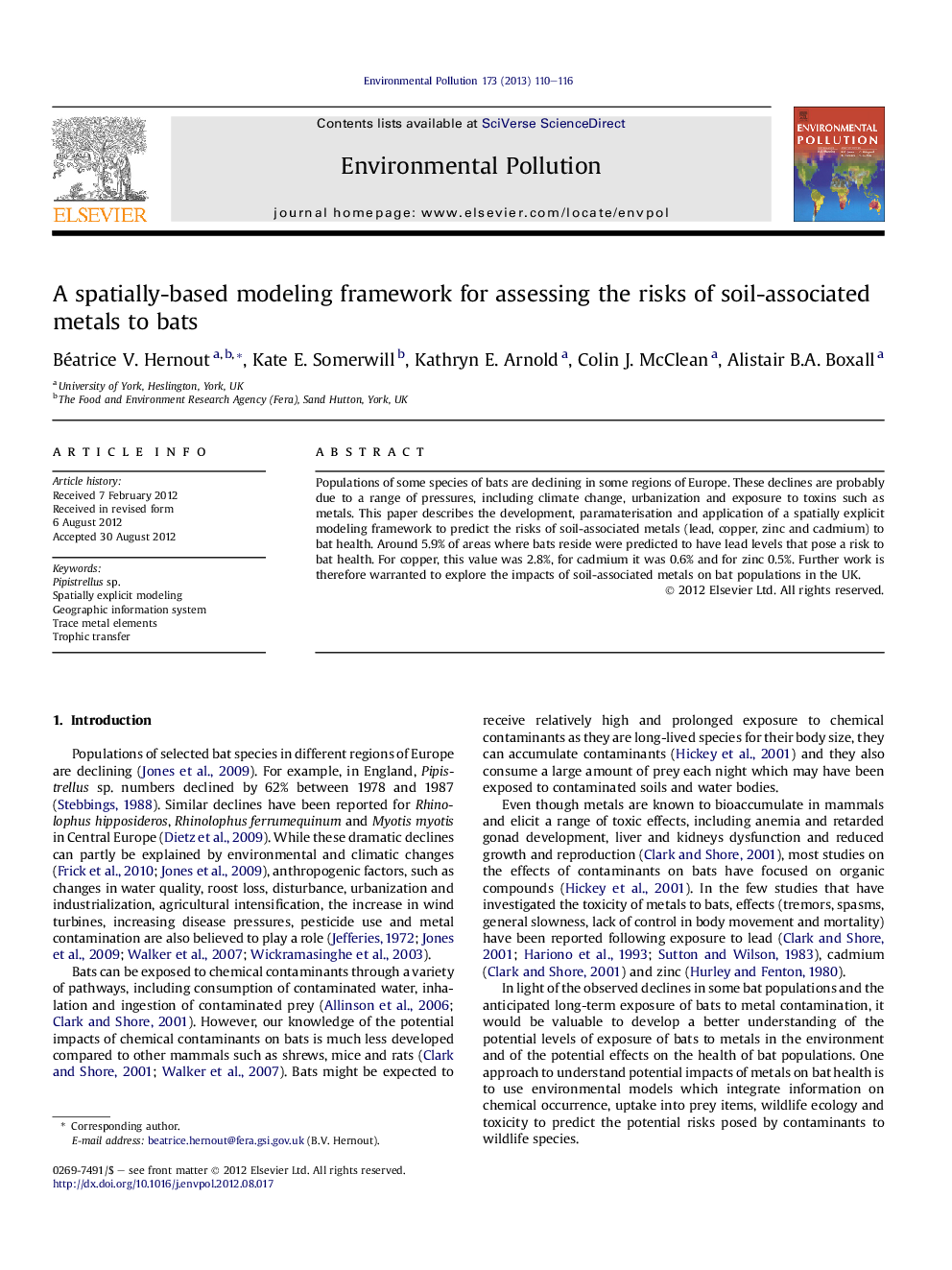| کد مقاله | کد نشریه | سال انتشار | مقاله انگلیسی | نسخه تمام متن |
|---|---|---|---|---|
| 4424478 | 1619199 | 2013 | 7 صفحه PDF | دانلود رایگان |

Populations of some species of bats are declining in some regions of Europe. These declines are probably due to a range of pressures, including climate change, urbanization and exposure to toxins such as metals. This paper describes the development, paramaterisation and application of a spatially explicit modeling framework to predict the risks of soil-associated metals (lead, copper, zinc and cadmium) to bat health. Around 5.9% of areas where bats reside were predicted to have lead levels that pose a risk to bat health. For copper, this value was 2.8%, for cadmium it was 0.6% and for zinc 0.5%. Further work is therefore warranted to explore the impacts of soil-associated metals on bat populations in the UK.
► A modeling framework is presented to estimate risks of contaminants to wildlife.
► The model has been applied to soil metal contamination and bat species.
► Results indicate that lead and copper pose the greatest risk to bat health.
► A risk is predicted for up to 6% of areas where bats reside in England and Wales.
Journal: Environmental Pollution - Volume 173, February 2013, Pages 110–116